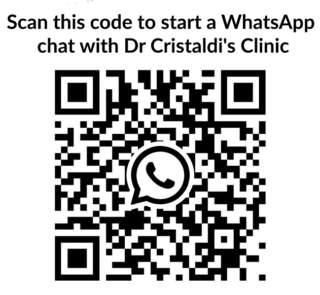ANAL FISTULA
The anus is an external opening through which feces is expelled out of your body. There are a number of small glands inside the anus. These glands may sometimes get blocked and form an infected cavity called an abscess. Often, anal abscesses further develop into an anal fistula. An anal fistula is a small channel or tunnel that develops from the infected gland and opens out onto the skin near the anus.
Some fistulae have only one opening, while others are branched out into many openings. Fistulae may sometimes be connected to the sphincter muscles, the muscles that open and close the anus. The ends of the fistulae look like holes on the surface of the skin around the anus. Anal fistulae are commonly treated through surgery.
- Signs and Symptoms
- Diagnosis
- Treatment
- Post-operative Care
- Risks and Complications
The commonly observed symptoms of an anal fistula include:
- Throbbing pain that may get severe when sitting
- Irritation of the skin around the anus
- Swelling, tenderness, redness
- Bleeding
- Constipation
- Discharge of pus
- Pain during bowel movement
- Fever and fatigue
During the initial consultation the doctor will review your medical history and ask information about prior surgeries that you may have had before. Please bring all the documentation relevant to your prior treatments as it may be helpful to the doctor.
Initial assessment of anal fistula patient is based on two tests. One called 3D Endo Anal Ultrasound with hydrogen peroxide contrast is directed to identify the type of fistula and its course in respect to perianal structures and muscles (sphincters). The second test called High resolution Ano-rectal manometry is performed to assess the function of anal sphincter which may have been already compromised due to prior surgery and or persistent peri-anal infections. Both tests are performed in the clinic and do not require any form of anesthesia or sedation as they are not painful. Mild burning at the fistula site can be felt after irrigation of the fistula tract with hydrogen peroxide which helps to delineate with more precision the fistula tract. Results of the test are available immediately and are discussed with the patient and proper treatment plan is formulated and discussed with the patient.
Fistula surgery has gradually moved from very invasive procedures such as fistulotomy as it is described later into less invasive procedure aimed to eradicate the fistula without compromising the function of the sphincter muscles which are vital to preserve and normal continence. We have several options with regards to surgery when we face a patient with fistula
Fistulotomy: The surgery involves cutting open the fistula across its whole length in order to flush out the contents. It heals into a flattened scar after 1 – 2 months. It is usually limited to very superficial fistula which did not cross the sphincter muscle
Seton technique: The seton technique involves passing a surgical thread into the fistula tract and leaving it in place for several months or permanently. This helps to keep the tract open and drain the contents of the fistula. This may be considered if you are at a risk of incontinence (inability for you to control your bowel movements), because your fistula crosses your sphincter muscles. These type of approach allows also the area eradication of the infection in the fistula tract to create a more stable type of fistula without an ongoing infection
Advancement flap procedures: This procedure is usually preferred if the fistula is complex or if you are at a high risk of developing incontinence. The fistula tract is removed. A small piece of tissue from the internal lining of the rectum is mobilized (advancement flap) and brought down to cover the opening of the fistula.
Bio prosthetic plug: A cone shaped plug is developed from human tissue. It is used to block the internal opening of the fistula and is sutured in place. The plug does not completely close the opening, allowing the fistula to drain.
LIFT – Ligation of Intersphincteric Fistula Tract: This relatively new procedure is a rather revolutionary approach to achieve the healing of anal fistula which consist in approaching the fistula track with a small incision and dissection of the inter sphincteric space to reach the fistula track from outside and then ligating it very close to the internal opening. The rest of the tract is cleaned and left in order to heal spontaneously.
The vast majority of the procedure performed at Harley St., Medical Centre for anal fistula are minimally invasive. After the surgical procedure, your doctor will discharge you from the hospital on the same day. You may suffer with minimal discomfort of the area for few days but the proper painkiller medication is prescribed at the time of discharge. There is not a great deal of limitation after the surgery and you can resume her normal life starting from the following day. Any specific care related to surgery you’ve received it will be clearly specify on the discharge summary you receive when you leave the hospital.
Anal fistula surgery is generally safe with no major risks. However, like most surgeries, anal fistula surgeries may involve complications such as:
- Infection
- Anal pain
- Bleeding
- Recurrence of the fistula is unfortunately quite frequent after any type of fistula surgery but we are seeing that with the most recent technique namely LIFT surgery, the recurrence rate is well below 20%
Your doctor will access your condition with utmost detail and recommend the best treatment option.
PRE/POST OPERATIVE INSTRUCTION
ANAL FISTULA SURGERY
The aim of this information sheet is to provide an answer the most frequently asked question about Anal Fistula Surgery.
Anal fistula surgery is aim to eradicate the presence of fistula tract between the anus and the perianal area. We performed such procedure respecting the integrity of the anal sphincters which are important to maintain the stool continence. Some of the procedures can be planned and done in stages and your doctor will explain how the entire sequence of surgery works and more detailed explanation can be found on the website in the Educational Video section.
The principle of anal fistula surgery is to remove the abnormal communication between the anal canal and the soft tissue around the anus offering to the patient a rapid recovery through minimally invasive approach avoiding incisions and postoperative wound whenever possible, which in general heals very badly in the perianal area due to the presence of bacteria and fluids. Healing the fistula respecting the integrity of the anal sphincter muscle is the aim of the procedure we offer. There are essentially three procedures that we offer to the patient and they are examination under anesthesia plus insertion of Seton which is usually the first step of treatment of infected fistula tract in preparation either to LIFT (Ligation of Intersphincteric Fistula Tract) and insertion of biological anal fistula plug. Both those procedures are selected by your doctor according to the type of fistula and the techniques aren’t very well described on the website Educational Video section.
FAQs
- What to expect after the procedure?
- What activity would I be able to perform immediately after surgery?
- What are the complications of this surgery?
In every circumstance, regardless of the type of operation, anal fistula surgeries are performed under general anesthesia as a day case procedure. There is no need for the patient to undertake bowel preparation before surgery. The duration of surgery is usually between 15 minutes to maximum one hour of the complexity of the condition. Once the procedure is completed your doctor will inject local anesthetic in the area blocking the inferior hemorrhoid nerve, which is very effective in controlling post-procedural pain. Patients are generally able to go home within 3 hour after surgery is completed. Medications to control postoperative pain are prescribed by the doctor and postoperative follow-up is generally scheduled after few days from the procedure. The patient at the time of discharge will receive Operation note, Discharge summary and Sick note when required.
Light physical activity can be sustained immediately after surgery and full physical activity can generally be resumed after one week. Full recovery happens usually within a week. Patients are generally able to resume work after few days although it is recommended to remain off work for one week.
Anal fistula surgery be offer our patients is generally very well tolerated with low complication rate. Occasional worsening of the anorectal infection may be observed although disease an exceptional circumstance. The most common symptoms that the patient are complaining after surgery is a persistent perianal discharge which may be initially blood tinted but generally fading into a serous discharge after few days. The presence of perianal discharge is normal but not the presence of thick purulent discharge. Anal pain and discomfort may be present for the first few days after surgery but is in general a rare persistent occurrence after surgery. Progressive healing of the anal fistula and cessation of the discharge is the final goal of the procedure. Your doctor will be able to assess the condition after surgery on a regular basis and he will also keep you updated on how the condition is progressing. Dr Cristaldi as colorectal surgeon has performed more than 400 surgery for anal fistula and he has continuously evolved his practice according the results and outcome of his patients, aiming for less invasive surgery, fast recovery, high healing rate and complete preservation of anal continence.






